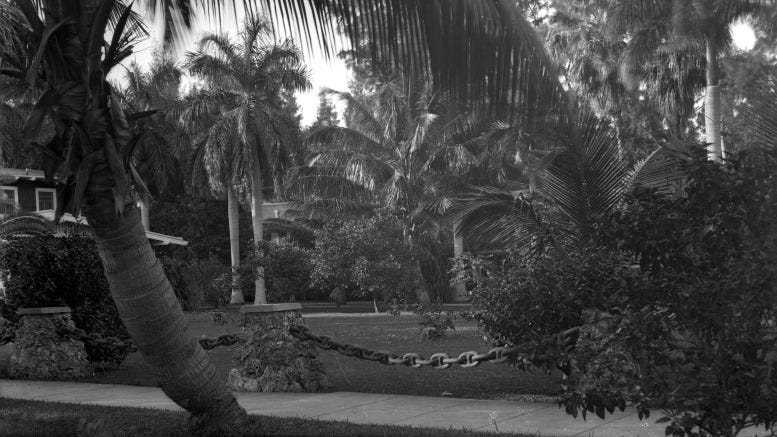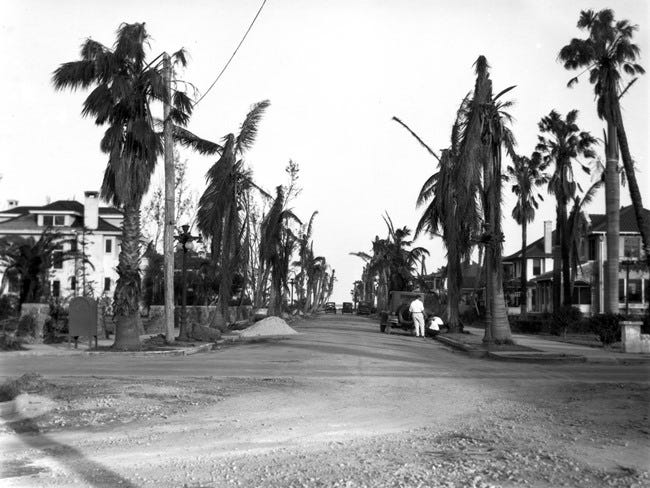Anchor Chain Fence on Brickell Avenue
The origins of the anchor chain found in a perimeter fence along Brickell Avenue was a mystery until recent times. Read the story of the home with the anchor chain fence.
One of the Southside neighborhood’s most popular tourist attractions was an anchor chain fence along Brickell Avenue and SE Fourteenth Street. This fence caught the attention of sightseers and tourists during its time enveloping the Brickell Avenue corner from 1917 until 1965.
To add mystery to an already intriguing artifact, many residents freely shared the tale of the origin of the anchor chain, which turned out to be urban legend. Even those who rented and purchased the home payed homage to a false narrative for more than three decades. While the fence was a unique and ornate feature of the area, it was not the chain from the USS Maine.
The Real Story
When a four-masted American schooner grounded off the village of Planter, located in the Florida Keys, in the early 1900s, Charles Cook and others were there to salvage as much of the sailing vessel as possible before it sank. Planter became part of Tavernier in 1911.
Cook and his cohorts stripped the schooner of as much as they could before it was too late. They brought back the rigging, donkey boilers, the anchor and chain to a boat yard located in Miami. Most of the salvage was sold to Charley Diamond of the Van Steamship Company, but the anchor chain stayed with Cook in Miami until he sold it to William Huffstetler in 1910, who later sold it to Dale Miller a few years later.
Miller was a general contractor who built homes in the greater Miami area. It was his intent to use the chain as part of a construction project to be determined later. He finally found the right property and right buyer when he was hired by Emily J. Clark to build her winter residence at the corner of Brickell Avenue and SE 14th Street in the neighborhood that was once referred to as Southside. We now refer to this quarter as Brickell.
Residence of Emily J. Clark
Emily and Melvin Clark were prominent citizens of Grand Rapids, Michigan, who were involved in businesses and philanthropic endeavors in their hometown. Melvin built his fortune in lumber, among other commercial investments, which provided the couple and their three adopted children a very comfortable life in western Michigan.
The Clark’s philanthropy included donating their first home on Sherman Street to become the M.J. Clark Memorial Home which cared for the elderly, and donating money to build the first schoolhouse at Starr Commonwealth in Albion, Michigan, which was later dedicated to Emily Clark. In addition, the family matriarch was actively involved with the D.A. Blodgett Home for Children and was an avid art enthusiast and collector. Emily purchased a residence on Fulton Street and donated it to the Grand Rapids Art Museum to house the institution’s art collection.
When Melvin passed away in 1909, Emily was 64 years old and was ready to escape the harsh winters of Michigan. She started traveling to Miami in 1913 and grew so fond of the region that she purchased two lots in March of 1917 which would become the location of her winter residence at 1329 Brickell Avenue.
Keep reading with a 7-day free trial
Subscribe to Miami History to keep reading this post and get 7 days of free access to the full post archives.




